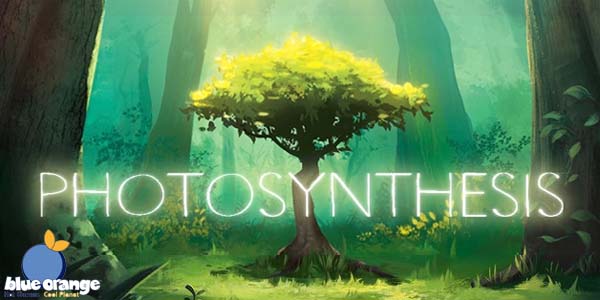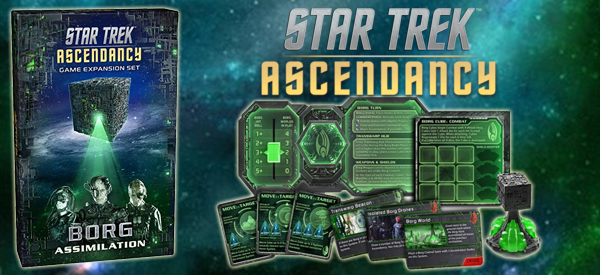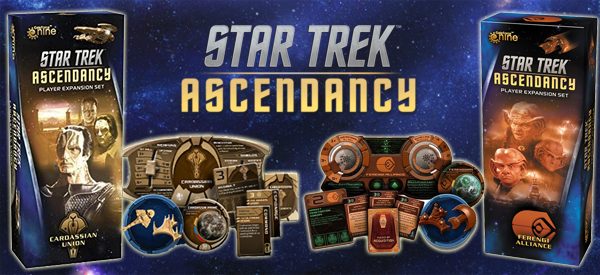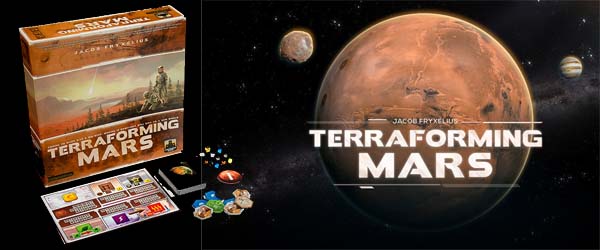
Blue Orange is a company that has released a series of very successful board games that are geared towards children, and which feature educational themes. My girlfriend and I came across some of their games in a kids' hobby store while on a family road trip last year. The game that stood out the most on the shelf was a new release called Photosynthesis, a game about players competing to grow a small forest. The box art and pictures on the back made the game look very pretty, and its educational theme about the life cycle of plants intrigued us. So we bought a copy and held onto it until our kid's birthday in the fall.
The game is recommended for ages eight and older, and is easy to dismiss as just a "kids' game", especially given its status as "edutainment". However, this game is more complicated than your standard kids' fare. There actually is some strategy involved, and the game runs for about 90-minutes. It's not a random dial-flicker or dice-roller like Chutes and Ladders, Candyland, or other such Milton Bradley / Hasbro / Parker Bros. games that make up a kid's board game shelf. It also has deeper strategy than the children's version of Carcassone (which our kid also has). This game (along with most of Blue Orange's catalog) is definitely geared towards family night, in which people of all ages are playing.
The game board is very pretty once multiple trees of different colors are placed.
A vibrant forest
This game's components certainly are pretty. The trees (and everything else) are simple cardboard cutouts, but they are printed on some thick and sturdy cardstock. Production quality is pretty high for a kid's game, and that high quality is always important when you're playing a game with kids, as it means the game will last longer before falling apart. All the colors are vibrant and attractive, and they all mix together very well when the trees are all clumped together on the board. I'm not particularly keen on the blue evergreens, which look very unnatural and kind of out of place. Maybe Blue Orange could have gone with more of a blue-green color? Or maybe red, as in "redwood"? Ah well, it's not a big deal. Maybe the blue trees are an homage to the company's name. The game looks very pretty, in any case.
The gameplay is pretty simple and elegant. Each turn, sunlight comes from a particular direction on the board, and any trees that are not blocked by an adjacent tree (e.g. the tree is not "in the shadow" of another tree) collects sunlight points for the owning player. Each player then spends their sunlight points to plant new seeds on the board, or to grow existing seeds into small trees, to grow an existing tree from small to medium or medium to large, or to let a large tree die. When a large tree dies, it creates new soil, which is awarded to the owning player as victory points. Trees in spaces further from the edges of the board score more points.
The sun moves across the board each turn, providing sunlight and shade to different trees.
Each round the sun moves around the board, casting different trees in the shadows of other trees. Medium and large trees also collect more sunlight, cast longer shadows, and can collect sunlight if partially-obstructed by smaller trees. So where you put the trees, and how tall you let them grow, will determine whether they will get sunlight, or if they will block other players' trees. You also have trade offs between planting more trees or growing your existing trees. Your own trees can also block your other trees, so you have to keep that in mind when you are placing or growing your trees.
... [More]
177b597b-f851-47a2-a7c2-d958179f018e|0|.0
Tags:Photosynthesis, Blue Orange Games, board game, edutainment, children, tree, plant, seed, sun, sunlight, Hjalmar Hach

I finally got around to playing some games of Fantasy Flight's second edition of the X-Wing Miniatures Game. I had bought the 2.0 core set and the 1.0 conversion kits back in October of last year. I was on the fence about purchasing 2nd edition. The only change that I was really excited about was the new turret rules, which I figured I could easily house-rule into 1st edition. However, I used my girlfriend's teacher discount at Barnes & Noble along with a coupon to get a hefty discount on the 2.0 core set and conversion kits, in the hopes that the game's other changes would also make it worthwhile.
Older ships have new abilities,
and tokens flip to a "spent" backside.
Fantasy Flight took the opportunity to streamline many components and add some ease-of-use features. For example, the maneuver dials are redesigned such that you can see every maneuver that the ship has available without having to rotate the dial. Upgrade cards have large, empty spaces that allow you to slot them underneath their respective pilot's card without covering up important information. Ship bases and maneuver templates have handy guidelines that can be helpful when executing partial maneuvers (due to collisions). And so forth.
Tokens have been broken up into different colors, each of which has a different effect. All green tokens (such as "focus" and "evade") are now buff tokens which are removed at the end of the round (unless a card says otherwise). Orange tokens are de-buffs (such as "disarm") that go away at the end of the round. And red penalty tokens (such as "ion" and "stress") remain in play until a certain condition removes them. Shield tokens now have a back side, which is colored red. This way, you can flip a shield token over when it's spent, but keep it on your ship card in case it ever gets recharged. The new energy and force tokens work the same way.
Better still, many features, concepts, and abilities from later expansions to 1st edition have been back-ported to all ships in 2nd edition. This has certainly increased the value of simple X-Wings, Y-Wings, and many other early 1st edition ships. The titular X-Wings, for example, now have a barrel roll ability on its card and a Talon Roll on its maneuver dial. The Lambda shuttle is one of the most improved ships in second edition, as it now has both a fore and aft-facing firing arc, as well as new "coordinate" and "jam" actions.
I appreciate that expansion ships are sold in smaller, more efficient packaging.
Heck, even the packaging is more streamlined. The massive boxes for 1st edition's large ships (which were full of empty space) have been replaced with smaller plastic bubble-packaging.
... [More]
fcf863f3-cbb8-458e-84ab-83449a8a4d74|3|2.3
Tags:Star Wars, Star Wars: X-Wing, Star Wars: X-Wing 2nd edition, miniatures, miniatures game, board game, Fantasy Flight, Extrebit, squadron builder, app, companion app, squad points, tournament

One of the weaknesses of Star Trek: Ascendancy (in my opinion) is the simplicity and irrelevance of the game's "minor races". They just sit there waiting to be invaded or hegemonized. They don't even have ships in orbit to defend themselves from attack (or provide the Klingons with an opportunity for some easy culture). I had hoped that there'd be an expansion pack that would give at least the warp-capable civilizations a little bit of agency. Sadly, that hasn't happened yet, but Gale Force 9 has released an expansion that does add an NPC faction: the Borg.
How do Borg allocate damage between multiple fleets?
The Borg are not a player faction (like the excellent Cardassians or Ferengi expansions). The Borg are a non-player "A.I." entity that use a deck of cards to define their behavior. They act in opposition to every player in the game, and are intended to add some extra player-versus-board challenge. The Borg expansion also adds rules for solo and 2-player games, though I'm not terribly happy with how either of those variants plays.
The big problem is that the rules for the Borg cause a lot of confusion. The non-player element of the Borg creates a lot of strange edge cases that the rulesmakers just didn't seem to think through very thoroughly. Some rules leave the Borg's actions somewhat ambiguous, and there are no rules for determining how to resolve such situations. For example, if a Bog cube is battling multiple fleets belonging to the same player, how does it determine which fleet takes damage? We generally house-rule that the Borg attack the largest fleet first, and that the player who activated the cube decides any ties.
The enemy of all my enemies
The bigger problem, however, is that the Borg movement rules lead to considerable balance issues once the Borg are connected to one player, because that poor player now faces the brunt of the entire Borg Collective. Once the Borg have a path to any one player's systems or homeworld, the Borg will exclusively funnel all of their ships down that one path, since it's the only "connected" route available. The only way this will change is for the targeted player to go out of his or her way to try to create another, shorter path to one of the other players (essentially painting a huge target on that player's head). Or I guess one of the other players could accidentally create a shorter path while they're exploring, if they're dumb or not paying particularly close attention. In any case, the problem is that once the Borg become connected to any one player, the Borg stop exploring and looking for the other players, which randomly puts the single player in a disadvantaged defensive position while the other two players are free to build up without much threat of being targeted by the Borg.
Having the Borg in play gives further reason for players to cooperate.
The game tries to offset this by making it so that the Borg become more powerful if they assimilate any worlds (including warp-capable civilizations), or if they assimilate any one player. If your homeworld is assimilated by the Borg, you even get to take over as a Borg player, taking a whole extra Borg turn in which you get to influence how they behave. This is a fun and thematic way of allowing an eliminated player to continue to participate in the game and seek some degree of "revenge" against the other player.
The idea here is that the players shouldn't let the Borg concentrate on wiping out a single player, and we should all partially co-operate in order to keep the Borg in check. There is no actual co-operative victory, so you're only co-operating with each other to the ends of stalling the Borg long enough for you to achieve a victory, at the expense of the other players. There is no "defeating" the Borg.
... [More]

It took forever for me to get a chance to play Star Trek: Ascendancy, thanks in large part to its hard three-player limit. I had a feeling that I would really enjoy the game when I first opened it up and skimmed through the rules. A good Star Trek-themed 4-x game is something that I've been craving since Birth of the Federation on Windows 98. Sure enough, after playing Ascendancy, it immediately became my favorite Star Trek board game on the market. The friends that I've played it with have also all loved it so far.
The base game included an insert advertising the first two expansions: the Cardassians and Ferengi. After the first play-session, I put the two expansions on my wishlist. Each expansion adds an additional faction and support for an additional player (for up to five, if you have the friends and the time). The Borg expansion came out around the same time, and I picked that one up too, as I was curious to see how the NPC Borg faction would play out. We decided to stick with the more basic expansions first though, as the Borg added extra complexity (and difficulty) that we weren't sure we were ready for. So I'll be reviewing the Borg seperately.
Star Trek: Ascendancy came packaged with an insert for the Cardassian and Ferengi expansions.
I had hoped to get a review of the Ferengi, Cardassians, and Borg out last year. And I don't mean like "in December" last year; I mean I had hoped to have this review out last February! Unfortunately, the difficulty inherent in getting four or five people together to play a six-hour board game, combined with packing up the house and moving last summer, meant that I got a couple early games in with the Cardassians, but never got a chance to play as the Ferengi until this winter. I didn't want to write a review of one faction without playing the other, since they are kind of inversions of each other in many ways.
The core game comes packaged with turn order cards for up to ten players, so I initially guessed that meant that Gale Force 9 was anticipating at least seven expansions. The Vulcans and Andorians will be released imminently, and the Borg rules actually allow the Borg to use up two turn order cards, which means there's only one space left to fill! Judging by the cards present in the base game, it looks like the Tholians are set to be the last expansion. If that's the case, this would leave some significant players on the Star Trek galactic stage out in the cold. The Dominion would be the single, most conspicuous absence from the game's roster. I also had hoped to see the Gorn as a faction, and at least one Delta Quadrant faction (such as the Kazon or Hirogen).
Well, I can take a guess what the next (hopefully not last) planned expansions is...
Though, I guess there's nothing stopping Gale Force 9 from releasing more expansion factions than there are turn order cards. I mean, I doubt anybody's going to be playing this game with nine or ten players anyway. Good luck finding a table big enough to even play such a game to begin with! GF9 could also just package an eleventh or twelfth turn order card in any future expansions if they feel it's necessary. So there's no reason why they would be unable to release the Dominion, Gorn, or other factions.
In any case, the first three expansions complete the Birth of the Federation roster of playable Federation, Klingons, Romulans, Ferengi, and Cardassians, as well as an NPC Borg faction.
There's not much in the way of new rules for either of the new factions. Both come with 10 new system discs (including the faction's respective homeworld), all the faction's ships and control nodes, advancement decks, some extra resource nodes and tokens, and ten new exploration cards. Everything slots pretty seamlessly into the core game. The only new mechanics are associated with some of the new exploration cards in the Ferengi expansion, but the card texts are pretty self-explanatory. There's a tiny rules insert anyway, in case you need more clarification.
I was expecting a Dominion expansion, and had hoped for the Gorn and at least one Delta Quadrant faction.
The seamless integration and lack of new rules does not, however, mean that the new factions feel dull or uninteresting. In fact, both the Cardassians and Ferengi have a very distinct (and very fresh) feel of play. Both have very potent unique boons and banes that separate them tremendously from the three factions included in the core set. In general, they both are dependent on using their ships and fleets to fuel their respective economies, which gives their ships uses beyond just exploration, research, and military action. You have to be very deliberate with your ships and fleets, since proper use is essential to keeping your economy running. As such, I don't recommend that a novice player jump into playing as either the Cardassians or Ferengi. You could probably muddle your way along, but it's better to have a firm grasp of the game mechanics (playing as the Klingons or Romulans) before you try your hand at the expansions.
... [More]
8ba34ba0-cafd-4866-80a3-5fab9c90eeb7|0|.0
Tags:Star Trek, Star Trek: Ascendancy, Gale Force Nine, board game, expansion, Cardassian, Ferengi, labor camp, production, occupation, invasion, trade, culture

Steam recently released a digital version of the board game Terraforming Mars. I haven't played the digital version (which is getting "mixed" and negative reviews at the time of this writing), but I have played the board game version. It's pretty fun, and in celebration of the latest NASA probe landing on the surface of Mars, I thought I'd launch a review of the board game.
Terraforming Mars has a wide variety of gameplay mechanics, which makes it kind of difficult to clearly categorize it. It also makes it a little difficult to teach the game to new players efficiently. It's not an overly-complicated game, however. It's just a lot of different concepts that you have to explain. Regardless, I've been able to get through learning games with new players in about three or three-and-a-half hours (including the rules explanation). So it's not overly burdensome to learn and play. It's also not terribly hard to simply play a sample round to teach the game flow, and then mulligan the game if any players feel they dug themselves into a hole.
Terraforming Mars has multiple distinct mechanics, ranging from tableau-building to tile-placement.
There's tile placement with adjacency bonuses. There's resource management. There's action economy. There's a little bit of tableau building and hand management. There's even a certain degree of bluffing. Playing with the non-basic corporations adds variable player powers, You can even optionally play with card drafting! Pretty much the only thing that we're not doing is loyalty / betrayal mechanics. Despite including so many varying game mechanics, nothing feels out of place, and everything fits together well.
The rulebook includes footnotes explaining the scientific basis for the rules and mechanics.
Depending on how you play, however, the actual game board and your tableau of cards can sometimes feel very disparate. If you're not actively placing tiles on the board, then the whole board can pretty much boil down to a score and prerequisite tracker. However, if you're avoiding placing tiles on the board, then you're probably going to lose, as I've yet to see a predominantly card-based strategy win the game.
The board itself includes a map of Mars' surface, and has notable landmarks on Mars clearly labeled. Unfortunately, the board only covers one half of Mars' surface, so there's some notable landmarks that are not included at all (perhaps the other side of the planet is an expansion?). The resource cubes are very shiny and pretty, and have an appropriately sci-fi aesthetic to them. The rulebook also includes little footnotes that explain some of the scientific bases for the game's rules and mechanics. it's like the kind of thing you might expect if Neil DeGrasse Tyson wrote a board game. Science and space nerds will probably really appreciate these efforts at scientific accuracy.
The resource cubes are pretty, but shift around very easily on the flimsy, card stock economy boards.
Other components besides the resource cubes are kind of cheap and flimsy though. The player economy boards are printed out on basic card stock. There aren't any slots or grooves for the production cubes to sit in, so they slide around very easily if the table is jostled, or if the economy board is shifted around. You may want to invest in some third-party replacements or overlays in order to solve this problem.
The box also doesn't have any inserts of any kind for storing components -- just a handful of plastic, zip-lock bags. They expect you to just drop all the cards in a plastic baggie and just toss them in the box haphazardly along with all the other pieces!
At a price point of $70 (USD), I expect more from a game's components! Fortunately, where the game lacks in production value, it more than makes up for in entertainment value!
... [More]
ef527080-aedf-4583-a72d-8d6ee9108d4f|0|.0
Tags:Terraforming Mars, Stronghold Games, Jacob Fryxelius, board game, Mars, space, science fiction, terraforming, technology, hex, tile, city, forest, ocean, temperature, oxygen, victory points
|

| 12 | | | | | | | 60 | | 11 | | | | | | | 55 | | 10 | | | | | | | 50 | | 09 | | | | | | | 45 | | 08 | | | | | | | 40 | | 07 | | | | | | | 35 | | 06 | | | | | | | 30 | | 05 | | | | | | | 25 | | 04 | | | | | | | 20 | | 03 | | | | | | | 15 | | 02 | | | | | | | 10 | | 01 | | | | | | | 05 |
|